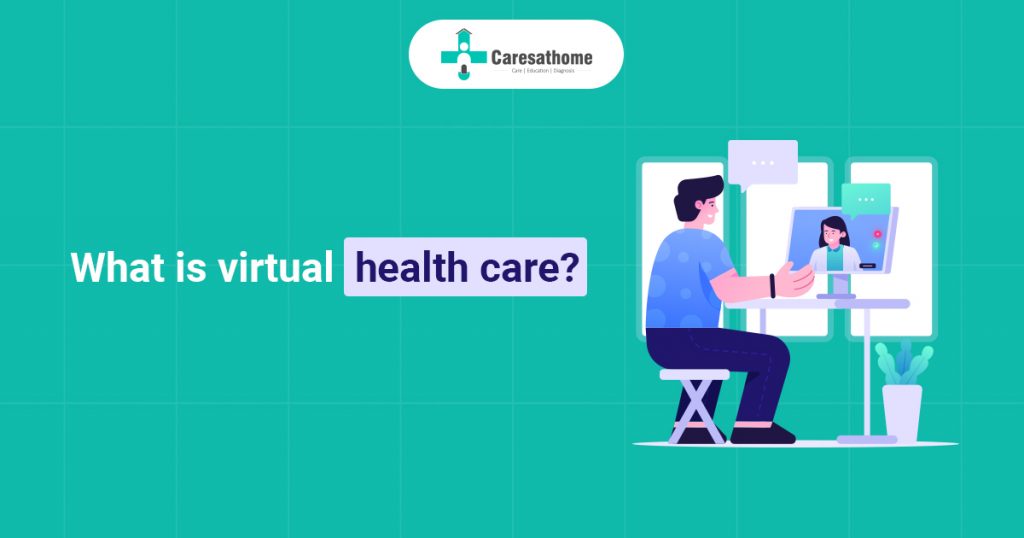Virtual health care, also known as telehealth or telemedicine, is a modern approach to delivering medical services through digital communication platforms such as video calls, phone consultations, and online messaging. It allows patients to access healthcare from the comfort of their homes or anywhere with internet access, making healthcare more accessible, convenient, and efficient. Virtual health care is particularly beneficial for those living in remote areas, individuals with mobility issues, or patients seeking follow-up care or routine consultations.
Here’s a deeper look at virtual health care, its benefits, and how it works:
Key Features of Virtual Health Care:
- Telemedicine Consultations: Telemedicine allows patients to meet with their healthcare providers via secure video calls or phone consultations. This can include primary care visits, mental health therapy, specialist consultations, or even post-surgery follow-ups. The doctor can diagnose symptoms, review medical history, prescribe medications, and offer treatment plans just as they would during an in-person visit.
- Remote Monitoring: Virtual health care also includes the use of digital tools to monitor patients remotely. Devices like blood pressure monitors, glucose meters, and wearable fitness trackers can collect real-time data, which is sent to healthcare providers for analysis. This helps manage chronic conditions such as diabetes, heart disease, and hypertension without requiring frequent office visits.
- Health Apps and Online Portals: Many healthcare providers offer secure patient portals or mobile apps where patients can access their medical records, request prescriptions, schedule appointments, or communicate with their healthcare team. These platforms allow for continuous care and facilitate easier access to health information.
- E-prescriptions: With virtual health care, healthcare providers can prescribe medications electronically and send them directly to pharmacies. Patients can pick up their prescriptions or have them delivered to their homes, improving convenience and medication adherence.
- Specialist Access: Virtual health care breaks down geographical barriers, enabling patients to consult with specialists without the need to travel long distances. This is especially valuable for individuals in rural or underserved areas where access to specialized care may be limited.
Benefits of Virtual Health Care:
- Convenience and Accessibility: Virtual health care allows patients to access medical consultations from the comfort of their home, reducing the need for travel, waiting rooms, and taking time off work or school. It’s particularly useful for routine check-ups, minor illnesses, or mental health services.
- Reduced Healthcare Costs: Virtual consultations are often more affordable than in-person visits due to reduced overhead costs for healthcare providers. In some cases, telehealth visits may even be covered by insurance plans, making it more affordable for patients.
- Improved Access to Care: People living in rural or remote areas, or those with mobility issues, can access care more easily without traveling long distances. Virtual health care makes healthcare more inclusive, especially for individuals who may otherwise have difficulty accessing traditional in-person services.
- Faster Care and Reduced Wait Times: With virtual appointments, patients can often get appointments sooner than waiting for an in-person visit. This is particularly helpful for non-urgent issues, allowing for faster treatment and advice.
- Support for Mental Health: Virtual health care has become a valuable tool for mental health services, including therapy and counseling. Patients can speak with mental health professionals via video or phone calls, reducing the stigma of visiting a mental health clinic and making care more accessible.
- Improved Continuity of Care: Virtual visits make it easier for patients to maintain regular follow-ups, manage chronic conditions, and keep in touch with their healthcare providers, even when life circumstances (like work or family commitments) make in-person visits difficult.
Limitations of Virtual Health Care:
- Technology Barriers: Virtual health care requires access to reliable internet and digital devices. For some individuals, particularly older adults or those in underserved communities, technology can be a barrier to accessing care.
- Limited for Physical Examinations: While telemedicine is effective for consultations and follow-ups, it may not be suitable for certain medical conditions that require physical examination, diagnostic tests, or procedures. In such cases, in-person visits may still be necessary.
- Privacy and Security Concerns: With the increased use of digital platforms for health consultations, there are concerns about the privacy and security of patient data. It’s important to use secure, HIPAA-compliant platforms to protect sensitive health information.
- Insurance Coverage Variability: Not all insurance plans cover virtual health care, and coverage may vary depending on the type of consultation, the provider, and location. Patients should check with their insurance companies to confirm coverage.
How Virtual Health Care Works:
- Scheduling Appointments: Patients can schedule virtual appointments with their healthcare provider via an online portal, app, or by calling the provider’s office. Some providers offer immediate consultations or “on-demand” services for urgent issues.
- Consultation: During the consultation, patients and healthcare providers connect through a secure video conferencing platform, phone call, or chat. The doctor will ask about symptoms, review medical history, and provide a diagnosis and treatment plan.
- Follow-up and Monitoring: After the consultation, patients may be given instructions for follow-up care, medication, or additional tests. Some providers may also offer continuous monitoring through remote devices or apps.
- Prescriptions and Referrals: If necessary, healthcare providers can send prescriptions directly to a pharmacy or make referrals to specialists for in-person care.
Conclusion:
Virtual health care is transforming the way we access healthcare services. It offers a convenient, cost-effective, and efficient way to receive medical care, especially for routine consultations, chronic disease management, and mental health support. As technology advances and access improves, virtual health care has the potential to further revolutionize healthcare delivery, making it more accessible and inclusive for people around the world. However, it’s important to recognize its limitations and continue using traditional in-person care when necessary for physical examinations or specialized treatment.

